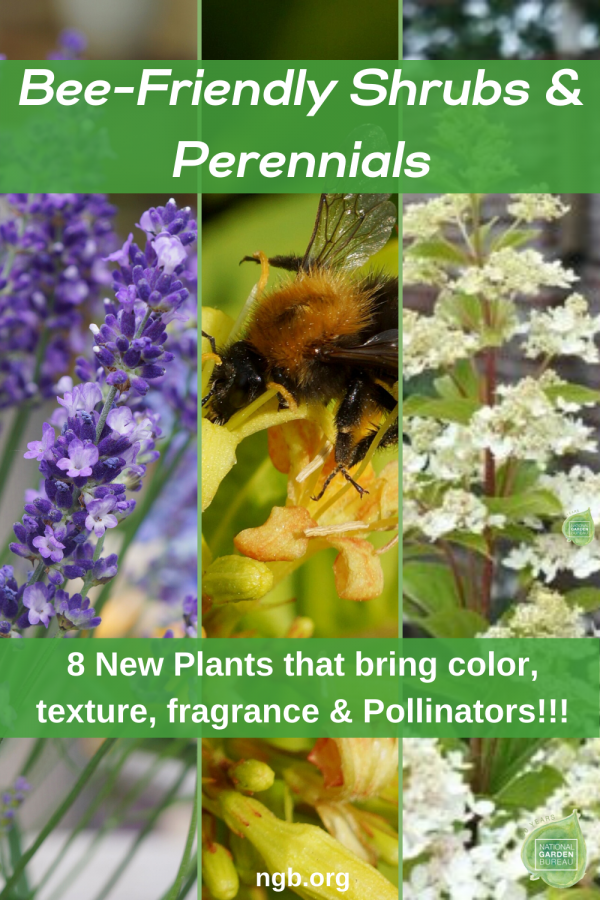Originally appeared at National Gardening Bureau.
Bee-friendly and Butterfly-friendly plants continue to pique the interest of gardeners…
whether they’re edible growers hoping to lure pollinators to boost the veggie harvest, ornamental gardeners who adore the interest butterflies and bees provide to the landscape or naturalists who wish to help feed and protect bees and butterflies. Fortunately, gardeners will find several gorgeous new varieties that attract pollinators while adding beautiful color, texture, and fragrance to their garden design. Sturdy, versatile, long-lasting, and stunning, pollinators will love these shrubs and perennials for sun and part-shade.
Add Structure to Define the Pollinator Garden
When creating a pollinator garden, start with the structural plants in the garden: shrubs
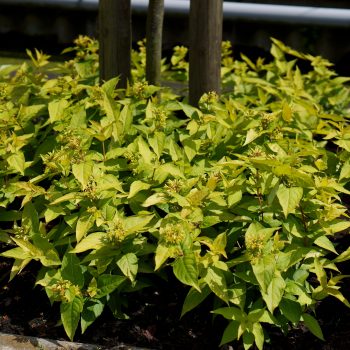 |
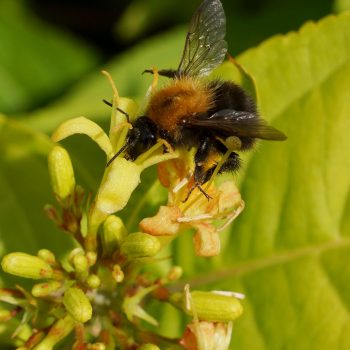 |
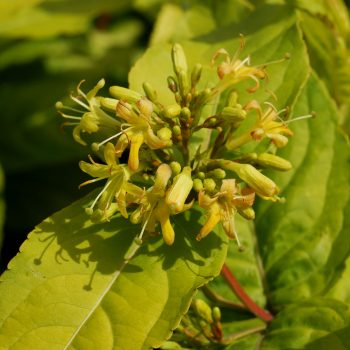 |
Diervilla rivularis Honeybee
As a terrific foundation for a pollinator garden, add the new bush honeysuckle Diervilla rivularis Honeybee. It’s appropriately named: Honeybee is a magnet for bees and butterflies. But insects aren’t the only ones who love it. Striking light-yellow leaves adorn the shrub and draw everyone’s attention. Honeybee flowers richly in summer with golden-yellow blooms. The compact, bushy shrub grows up to 32 inches tall and 40 inches wide. A disease-resistant, low-maintenance garden addition, Honeybee proves winter hardy to USDA zone 4A. It thrives even in low-quality soil and performs well both in sun and part-shade. Diervilla Honeybee adds a beautiful touch of color to borders and mass plantings, plus it looks lovely as a container planting on a terrace or balcony.
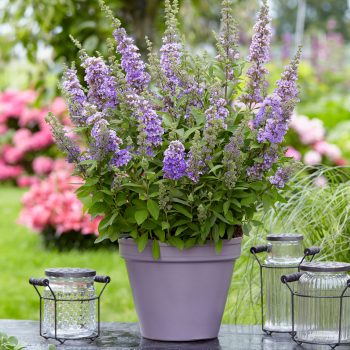 |
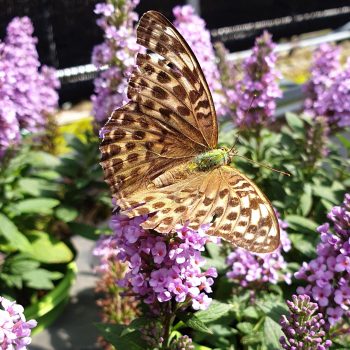 |
 |
Buddleja High Five Purple
Butterfly bushes may have suffered bad press recently, but with Buddleja High Five Purple, gardeners can enjoy the beautiful benefits of a butterfly bush without the worries of invasiveness! With a dense form covered in plump flower spikes bursting with double, purple blooms, pollinators flock to the shrub. The long, lovely panicles appear in spring and last well into fall, attracting butterflies and other beneficial insects. Easy to grow, Buddleja High Five Purple prefers full sun and moist, well-drained soil and is USDA hardy to Zone 6A. Best of all, it’s considered non-invasive, as it produces little or no seed—and any seed that appears doesn’t germinate. Add this beauty to containers, or use it as a focal point in the garden or planted in a hedge. The butterflies will thank you!
Create Pollinator-Friendly, Gorgeous Gardens with Perennials
Once the structural plants are in place, it’s time to add the perennials. Pollinator-lovers will adore the new varieties of three classics: Agastache Beelicious® Purple, Lavandula angustifolia Big Time Blue, and Echinacea Pretty Parasols.
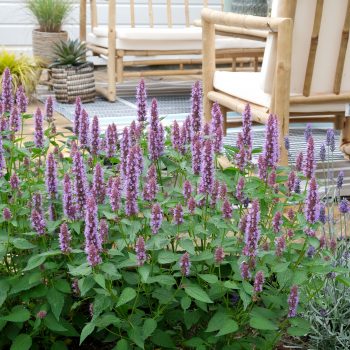 |
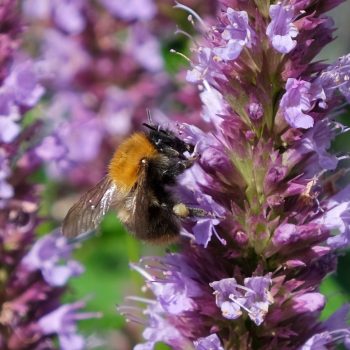 |
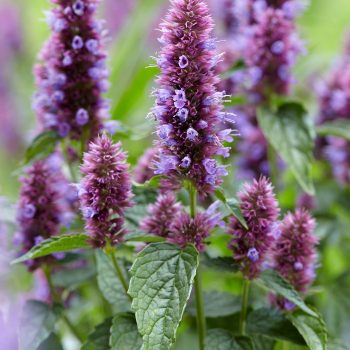 |
Agastache Beelicious® Purple
Agastache Beelicious® Purple entices bees and butterflies with its fabulous blooms. An easy to grow plant, it’s not fussy about the soil, thriving in sandy, loamy, and normal soils. Producing flower after flower, it blossoms all summer and well into autumn, adding stunning purple color to the garden. Perfect for borders or smaller space, Beelicious® Purple provides a compact form (12 inches wide, 16 inches tall) and is winter hardy to USDA zone 6A. It adds the perfect splash of color in borders, mixed containers, or as a solitary focal point.
 |
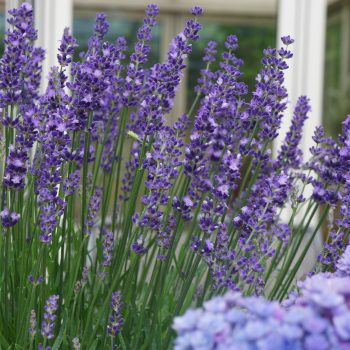 |
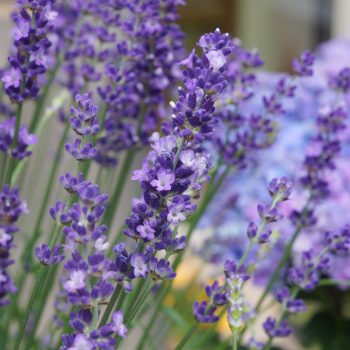 |
Lavandula angustifolia Big Time Blue
For the next course, add Lavandula angustifolia Big Time Blue to your pollinator menu. While it’s compact (20 inches tall, 30 inches wide), the huge blooms outsize other lavender varieties. Prolific, deep blue flowers cover the plant, creating a dramatic contrast against the vibrant, silvery-green foliage. Fragrant flowers bloom profusely from early summer into fall. Perfect in perennial borders, mixed containers, flowering hedges, and mass plantings, it’s also lovely as a solitary specimen. Plant it in rich, well-drained soil in full sun. It grows quickly, developing a strong root system. Once established, Big Time Blue is drought tolerant and low maintenance. Winter hardy to USDA zone 5A, prune this beauty in spring. Rich with nectar, butterflies, and bees will give Big Time Blue 5 stars!
Celebrate the #YearoftheLavender!
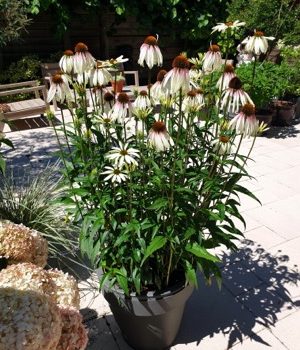 |
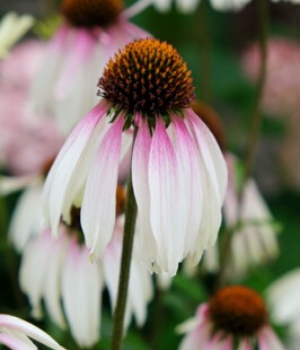 |
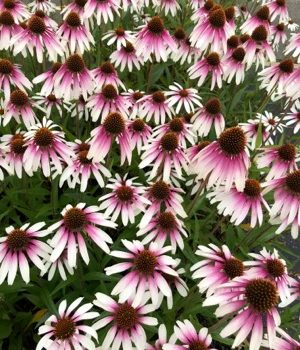 |
Echinacea Pretty Parasols
The flowers of Echinacea Pretty Parasols in pink and white look like adorable little sunshades. Butterflies and bumblebees flutter and buzz about the beautiful blooms. Pretty Parasols is nearly care-free. The sturdy stalks stand up against the wind. Hot summers, as well as cold winters, don’t harm it. (It’s winter hardy to USDA zone 5b.) The blossoms appear one after the other, with Pretty Parasols flowering from July until November. The flowers appear in different heights, sometimes with several blossoms on one stalk, giving this echinacea its “wild” appearance – perfect for a bee-friendly, natural garden. Pretty Parasols grows 36 inches tall and 20 inches wide. It’s a gorgeous addition for landscapes, ideal for mixed borders, and looks fabulous in planters on a balcony or patio.
Grow a Bee-Friendly Pollinator Garden in Partial Shade
Many gardeners think that without full sun, it’s impossible to grow a pollinator garden. Wrong! Many beautiful, bee-friendly new varieties thrive in partial shade
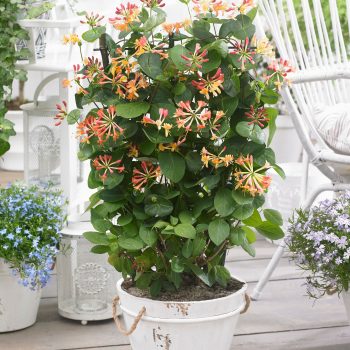 |
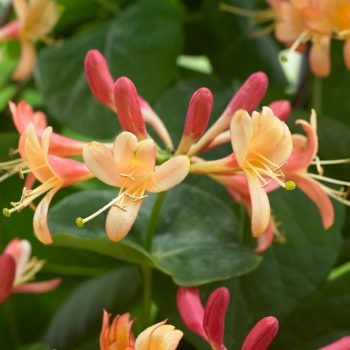 |
 |
Lonicera hybrid Coral Star
A treasure for flower walls and carpets in partial shade or sun is Lonicera hybrid Coral Star. Used as a climber, it reaches a height of 10 feet, growing approximately 6 feet wide. Without a trellis, it becomes an unusual ground cover. The flowers of Lonicera Celestial produce an elegant combination of intense orange and pink shades, as well as a delicious scent – enjoyed by both humans and insects. Perfect in a planter on a balcony or terrace or as a ground cover in the garden. Celestial is disease-resistant and winter hardy in USDA zone 5a.
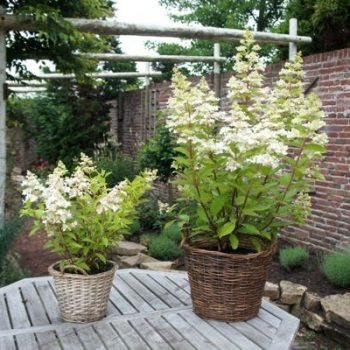 |
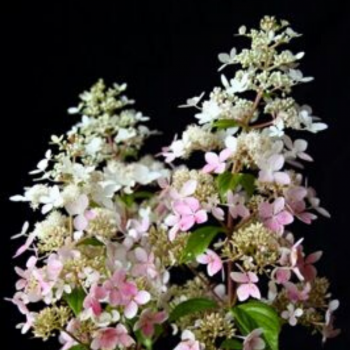 |
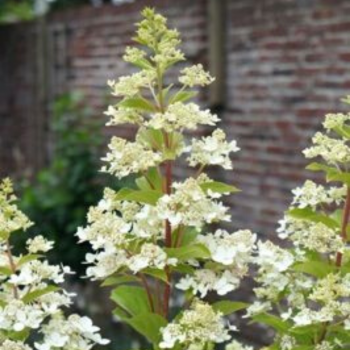 |
Hydrangea paniculata Confetti
Often overlooked as a pollinator plant, panicled hydrangeas provide a feast for bees. Hydrangea paniculata Confetti produces a light scent. Plant this beauty and watch the pollinators party in the garden! The conical panicles of Confetti show off with playful white and pink shades and a slightly green tip. Confetti blossoms from early spring till late autumn. It grows compact and bushy (47 inches high, 30 inches wide) with robust sprouts and is USDA hardiness to zone 4A. Confetti performs beautifully in containers on terraces or balconies or planted in borders and flower beds, as a group or in combinations with other plants.
Celebrate the #YearoftheHydrangea!
 |
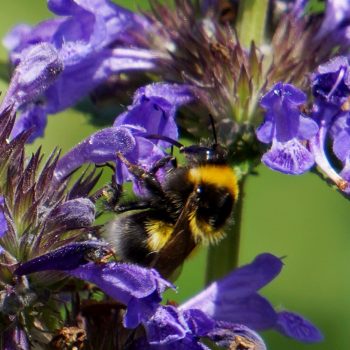 |
 |
Nepeta Neptune
Along with Confetti, Nepeta Neptune lures pollinators to gardens in partial shade. While it works well in semi-shady spaces, it’s a versatile perennial that performs well in sunny spaces, too. With its large blue blossoms and compact growth, it’s ideal for garden beds, mixed containers, or as a specimen. Bees benefit from the long, lavish blossoming that lasts from summer until autumn. Nepeta Neptune grows 12 inches high, 8 inches wide, and tolerates cold to USDA zone 5a.
With your garden filled with bee-friendly blooms, encourage the bees and butterflies to stay close by adding a woodpile, an insect hotel, or a loamy hill for earth-dwelling bees so your garden will buzz and hum all summer long.

